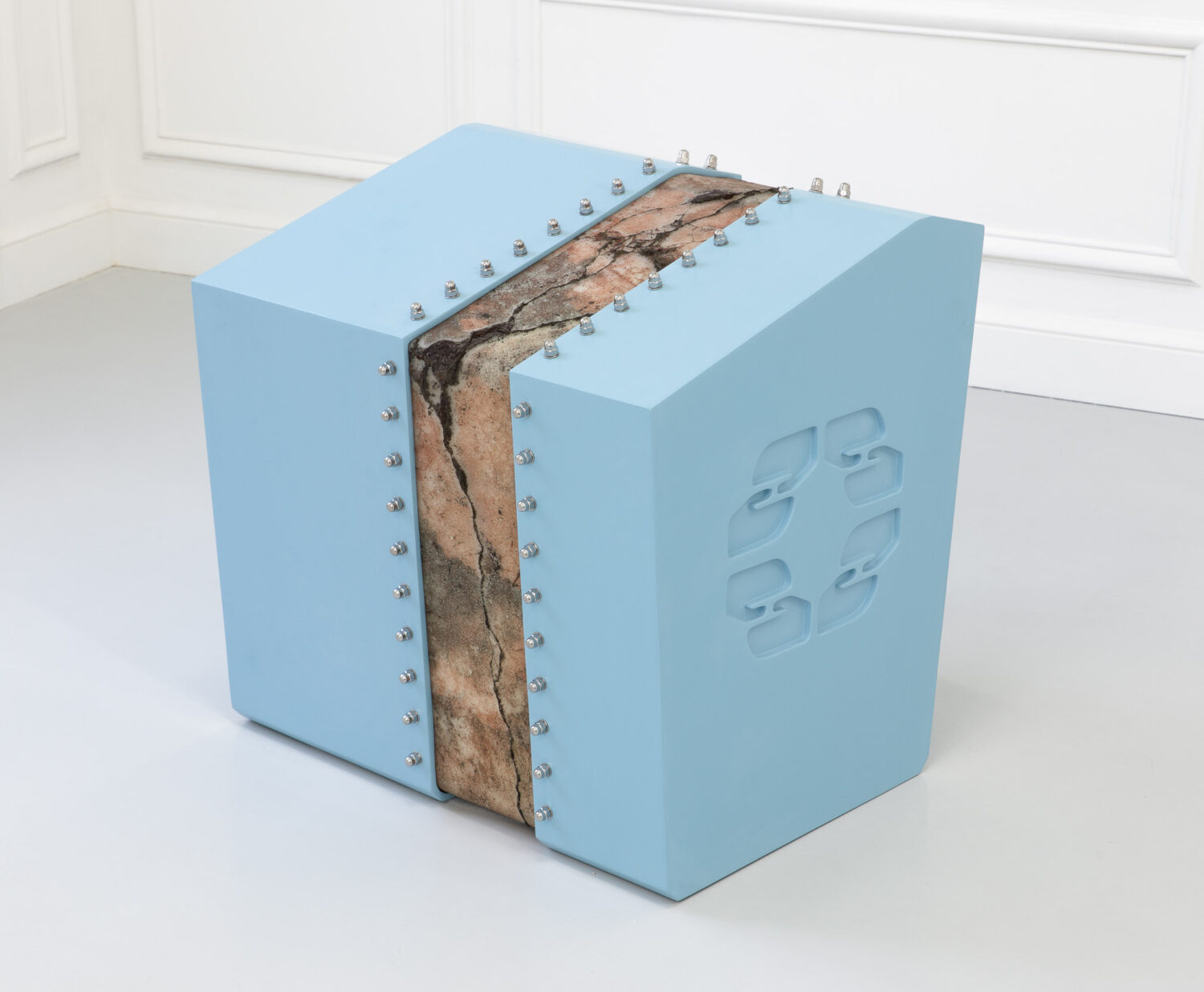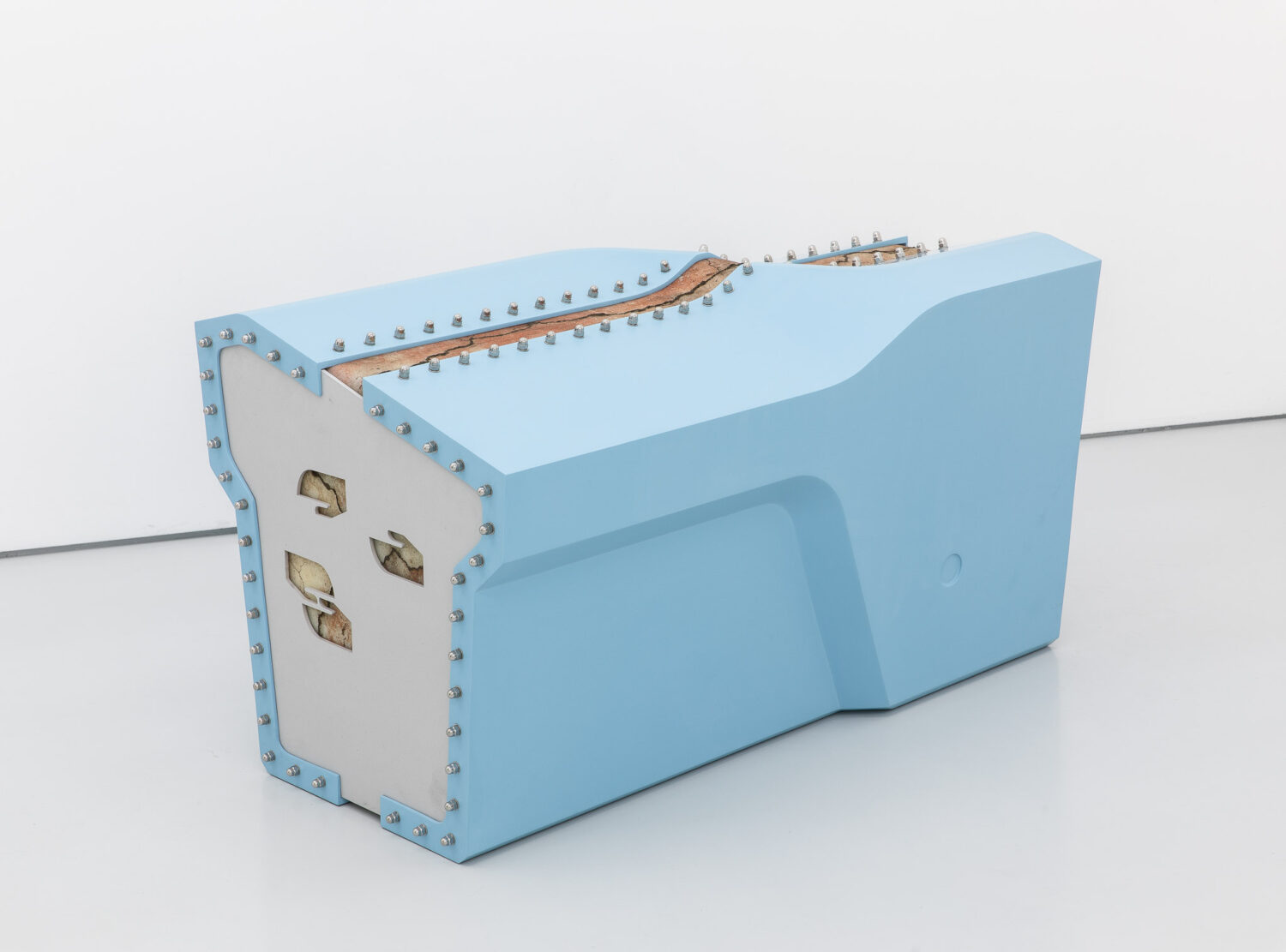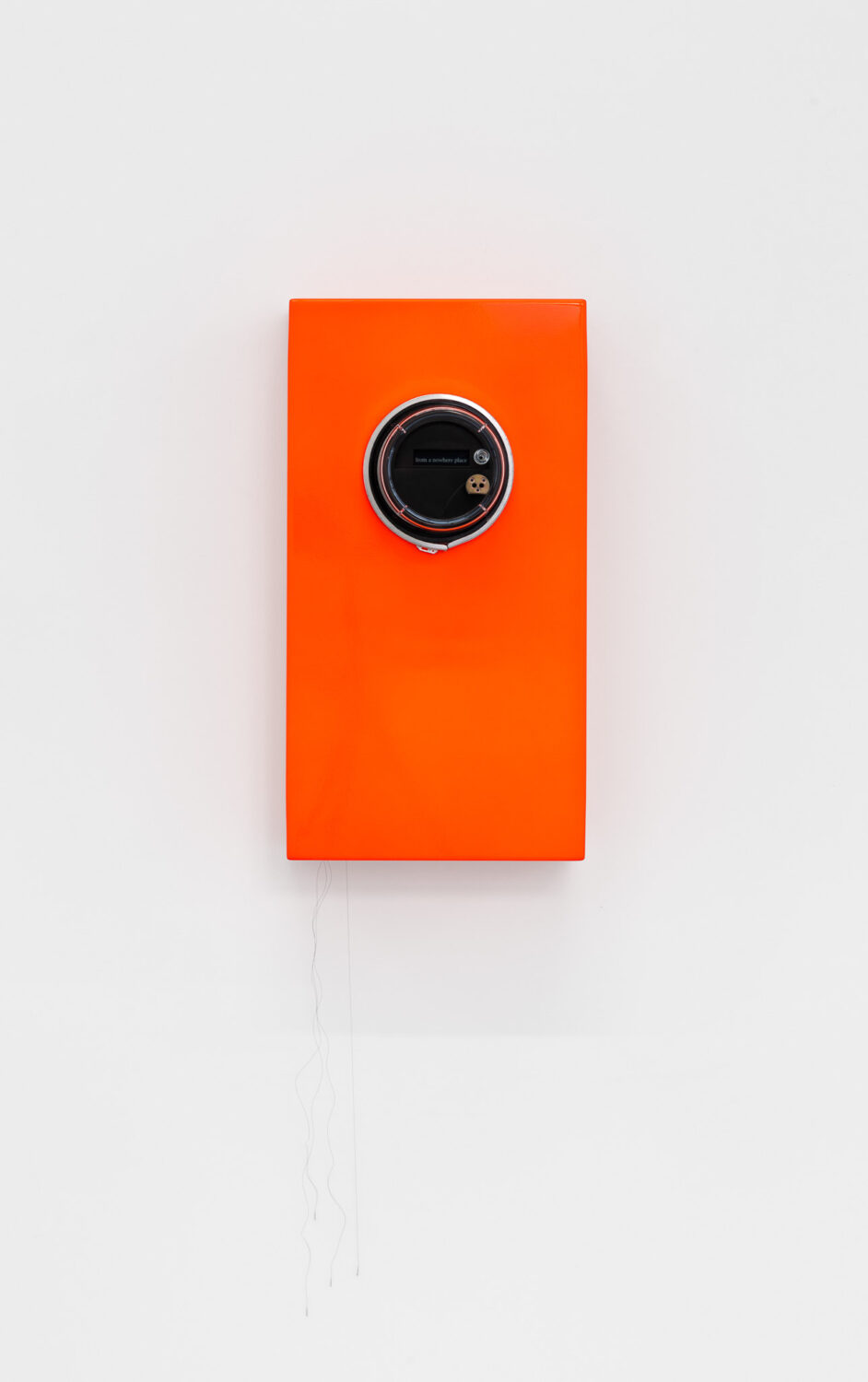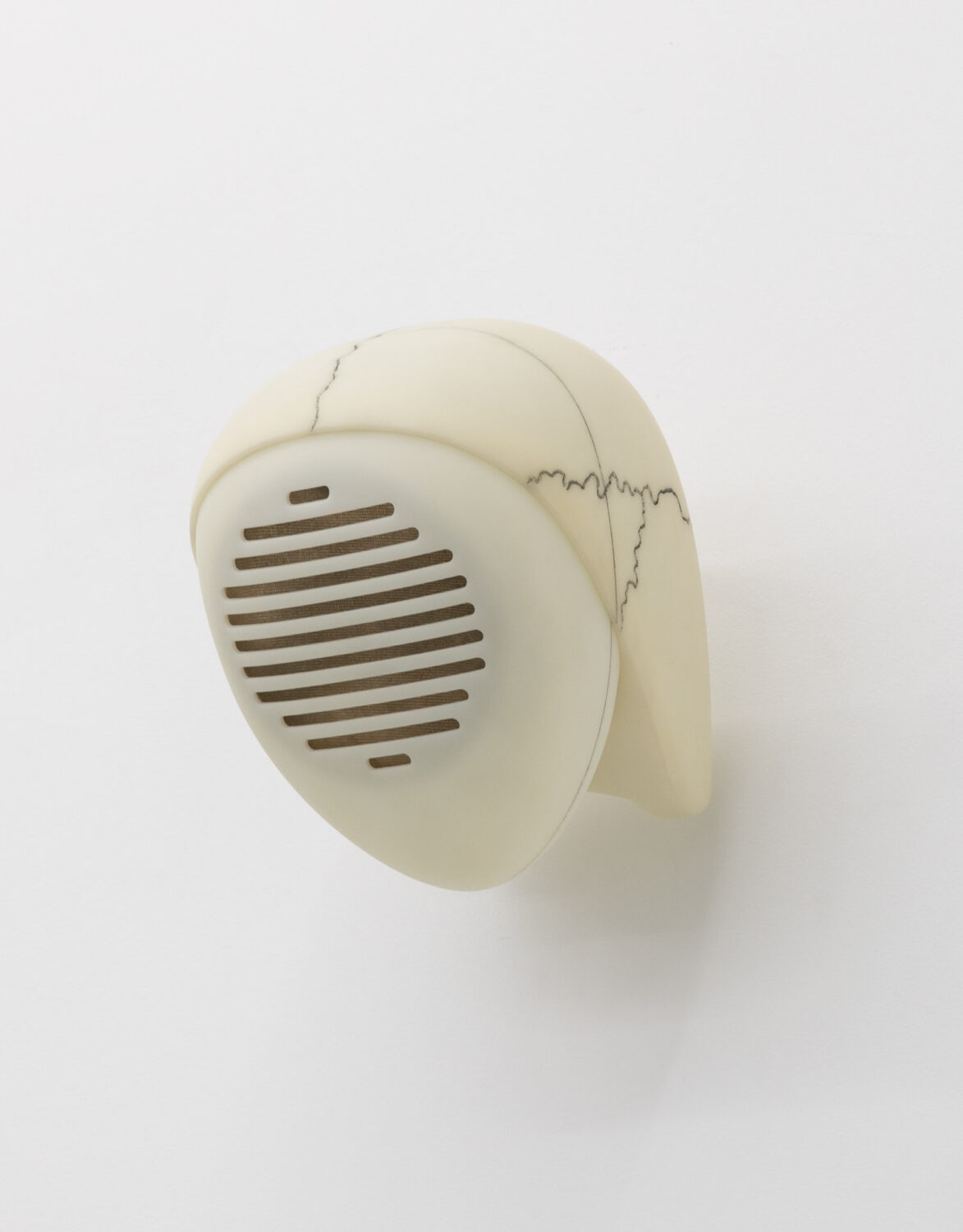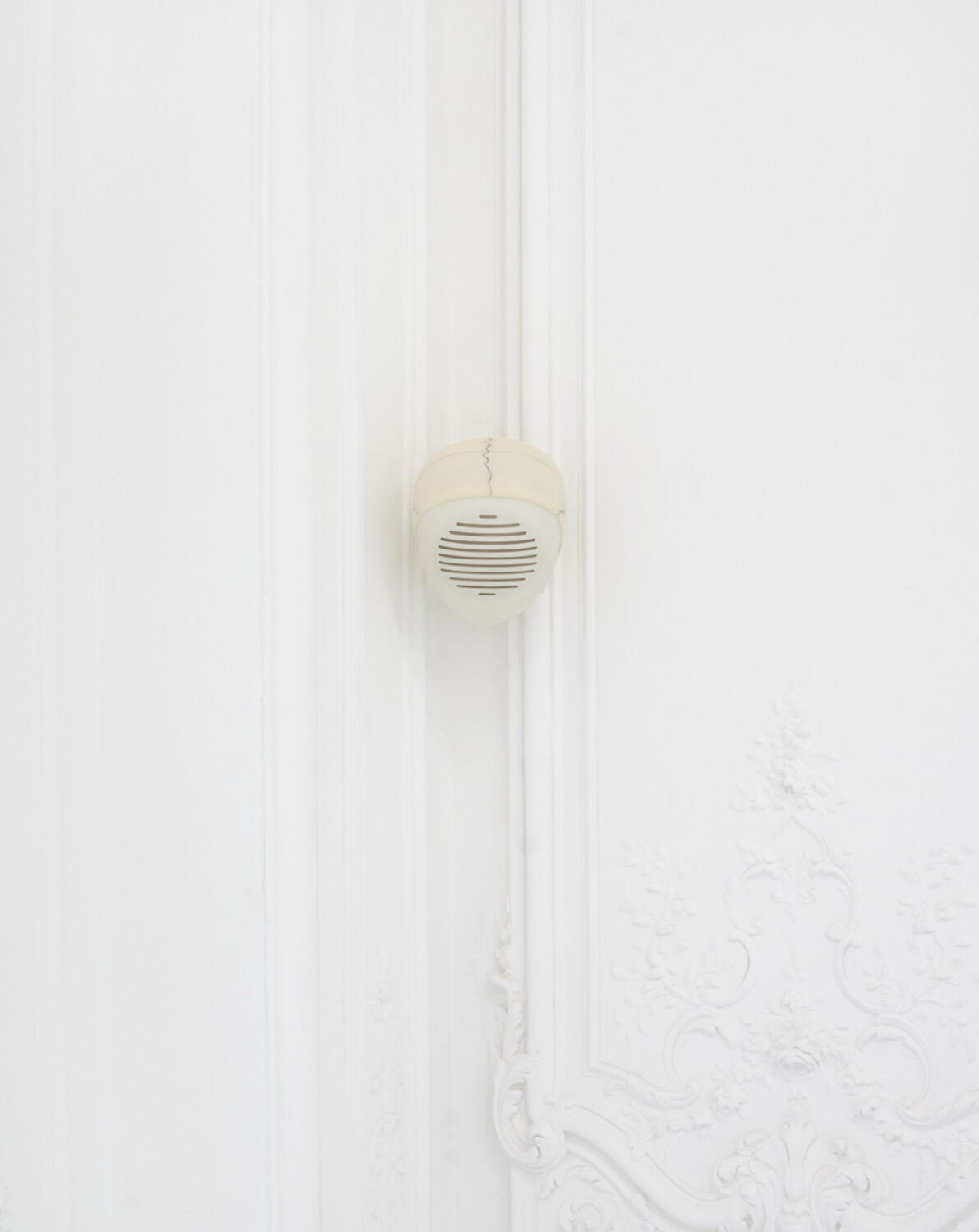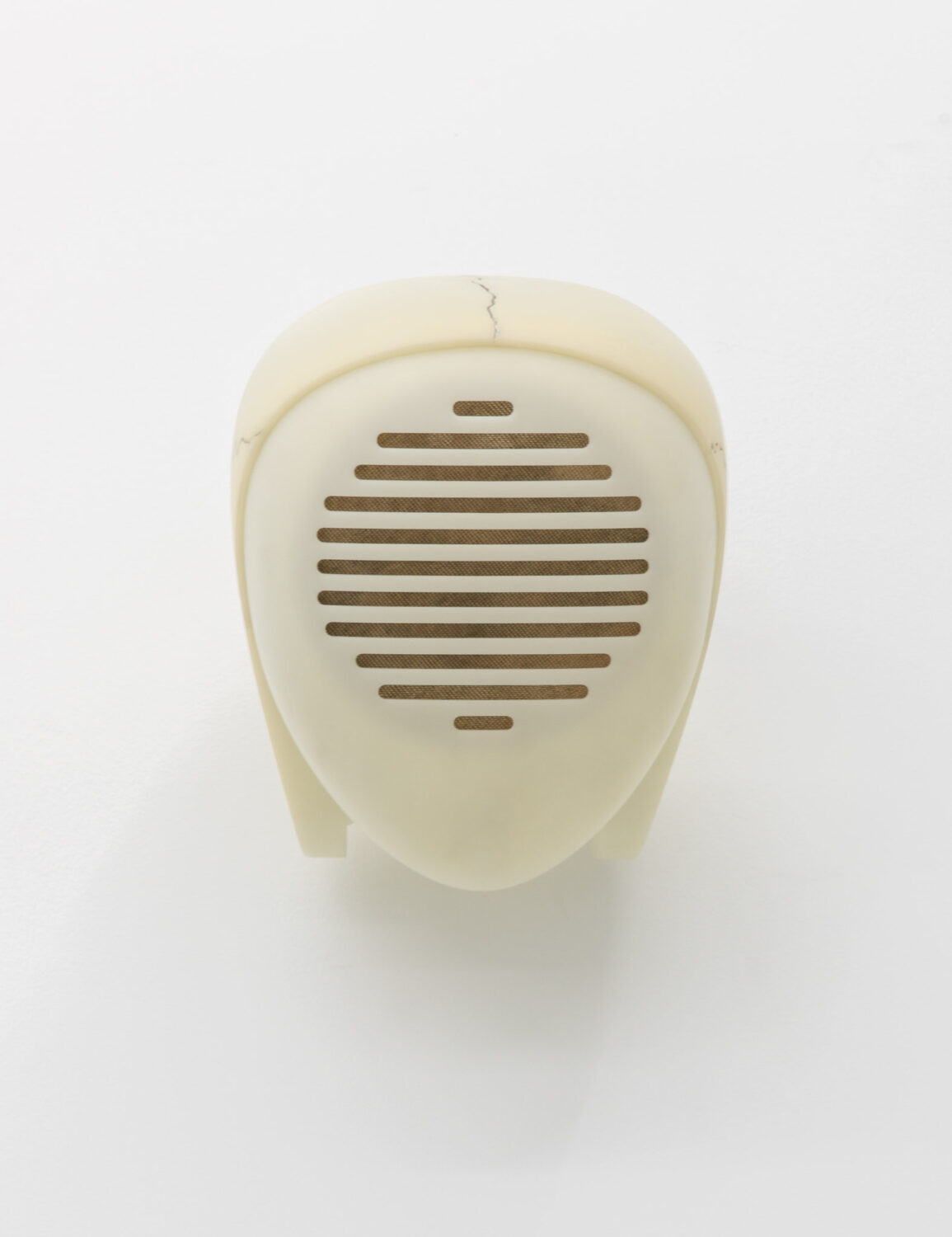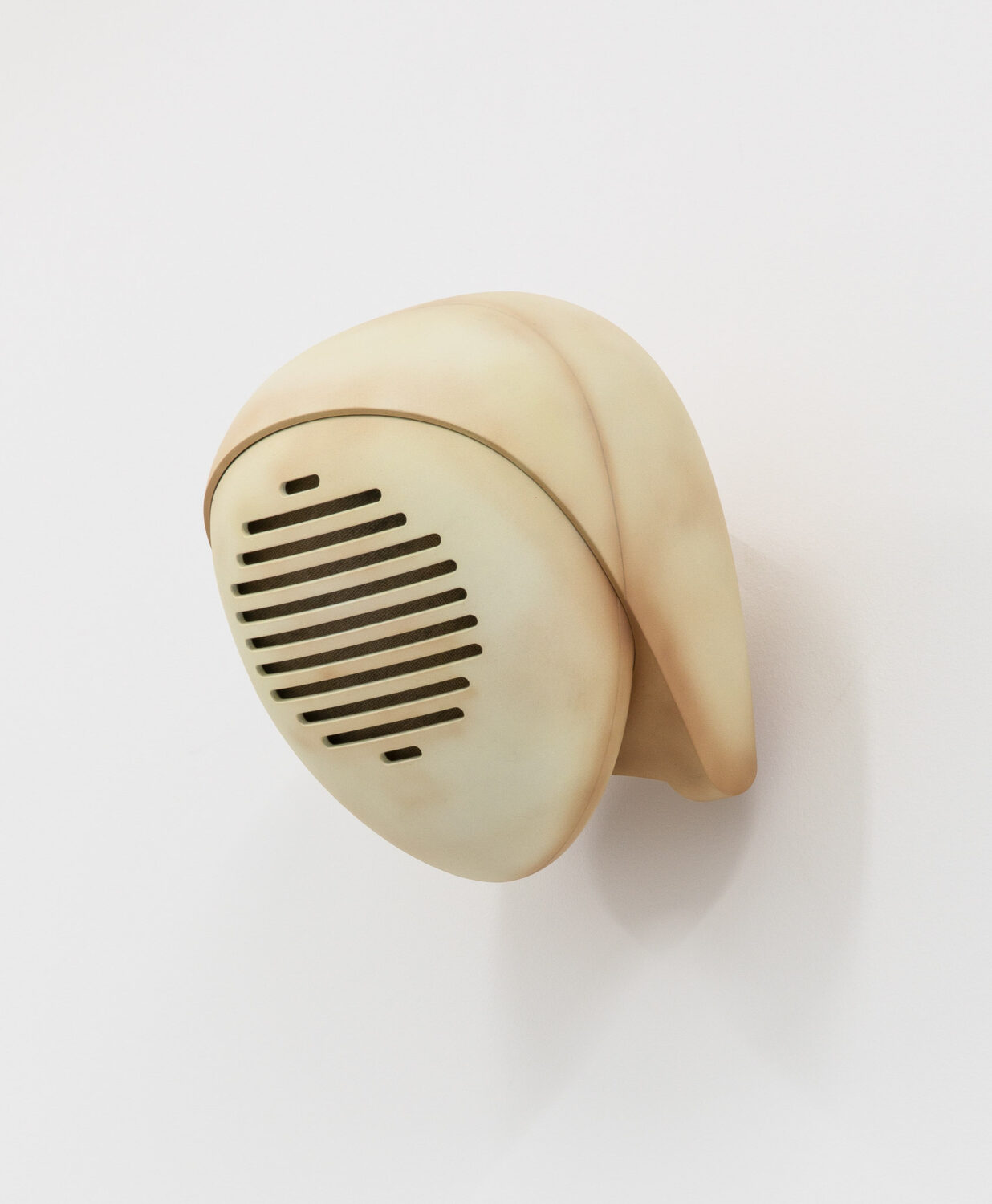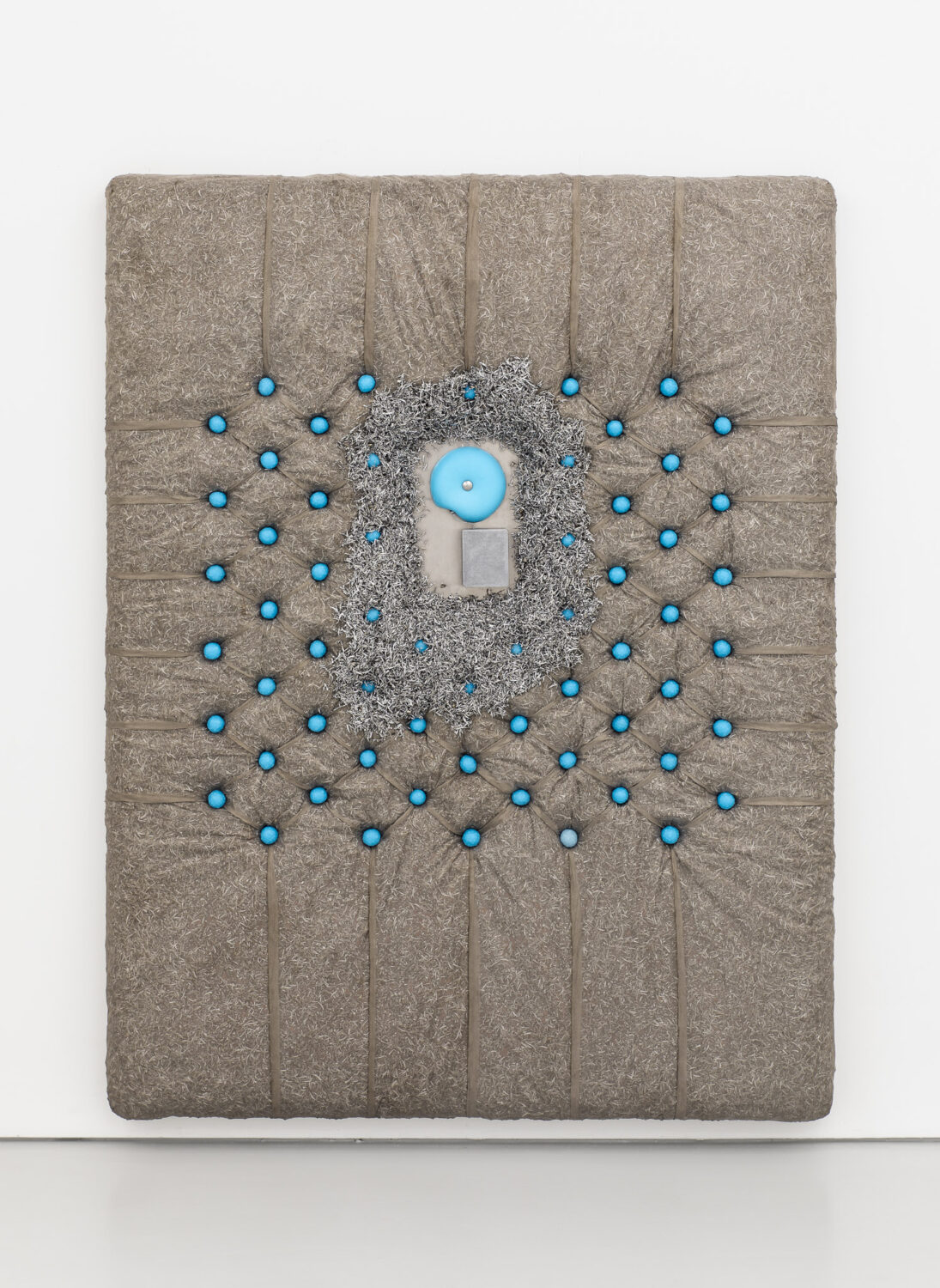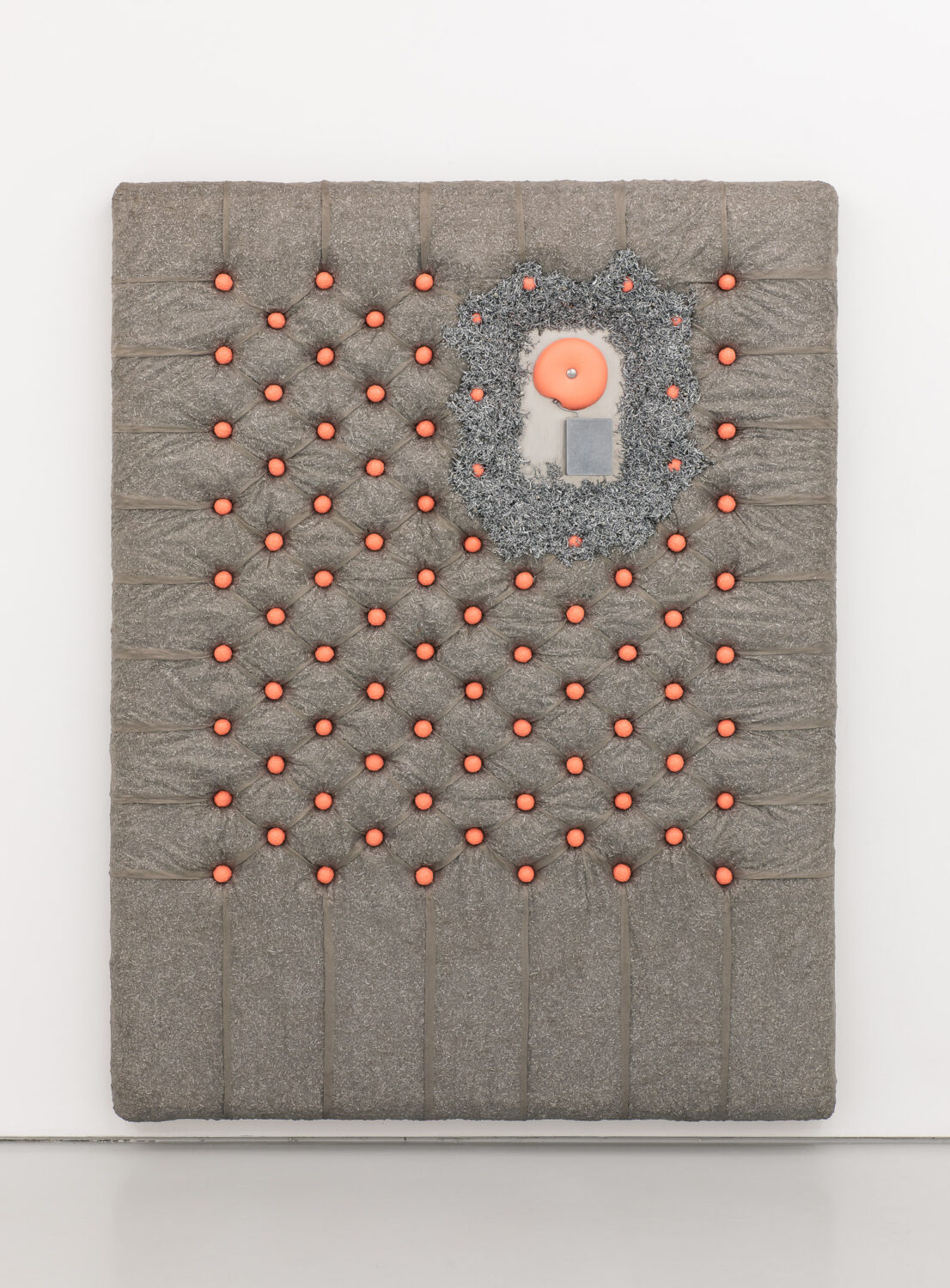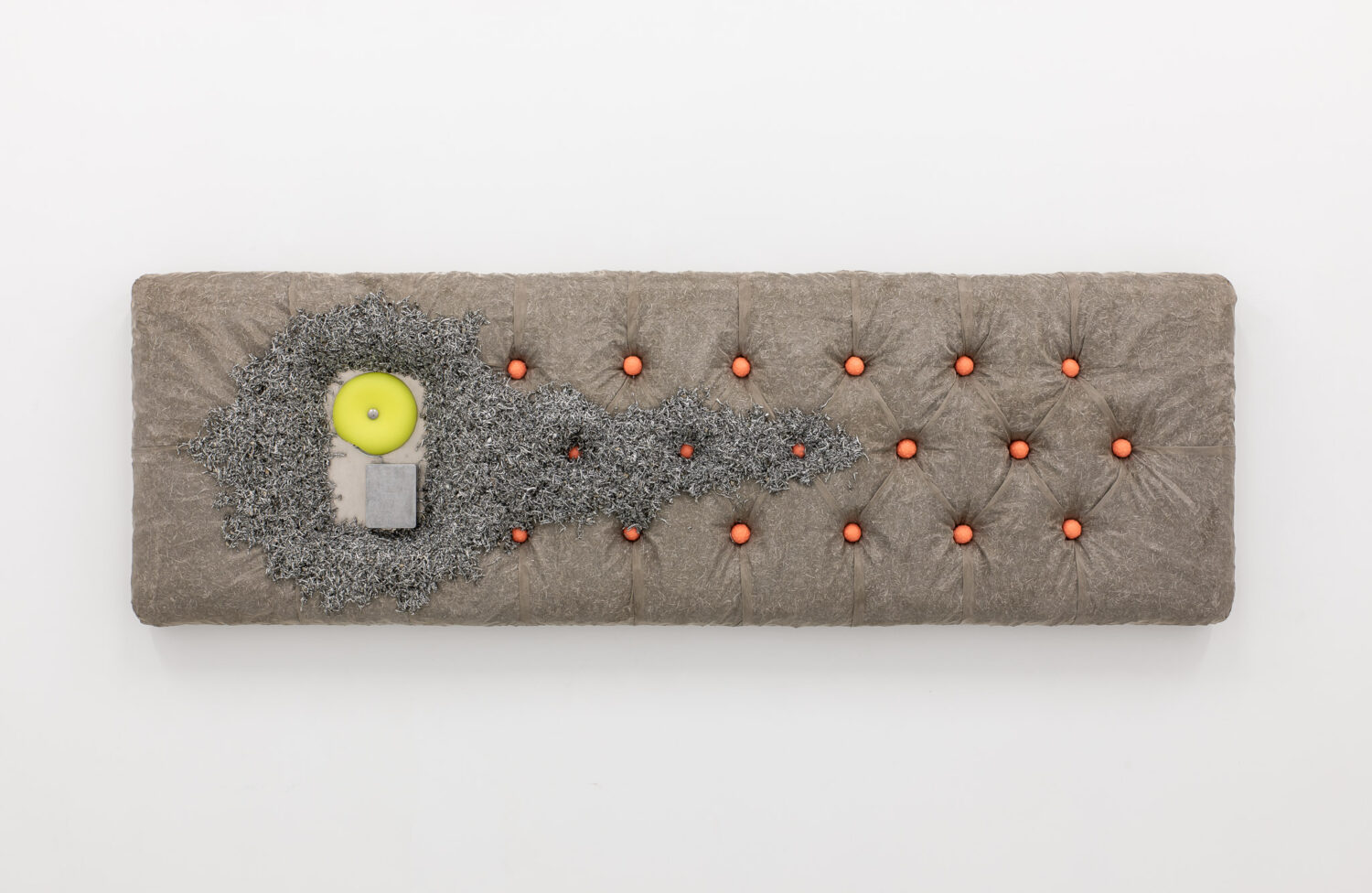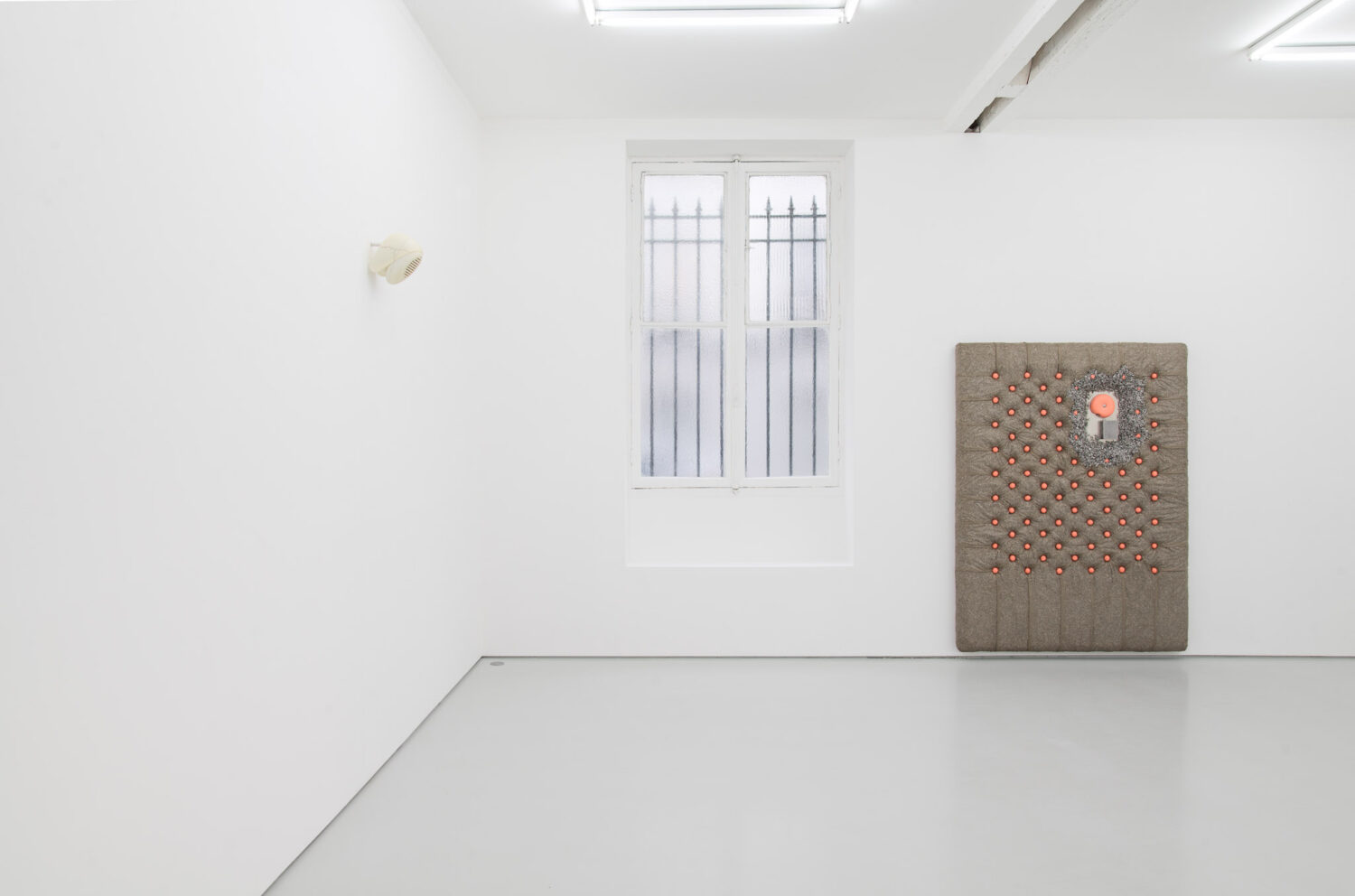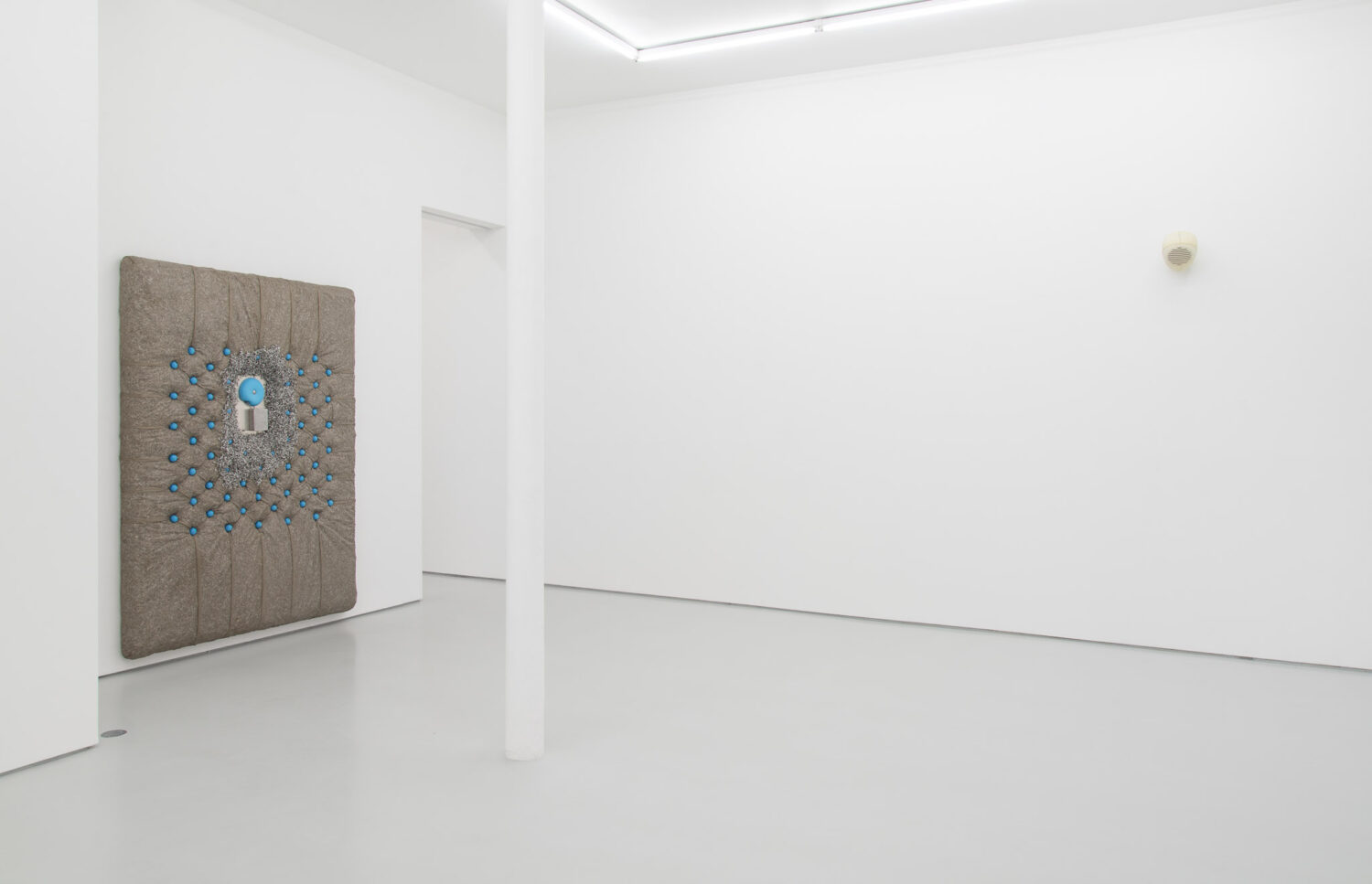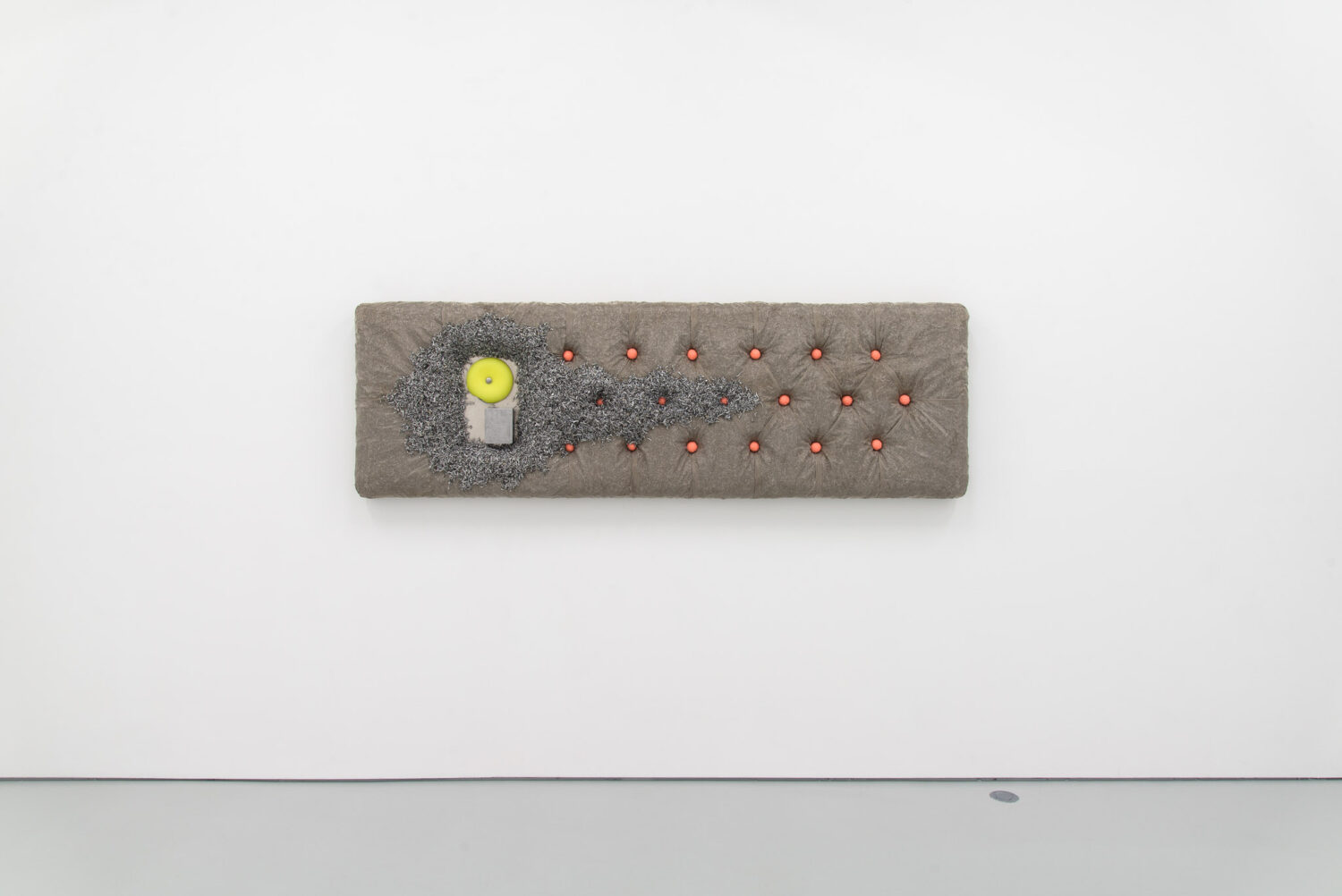

Past
Cooper Jacoby
Susceptibles
18 Oct - 01 Dec, 2018. Paris
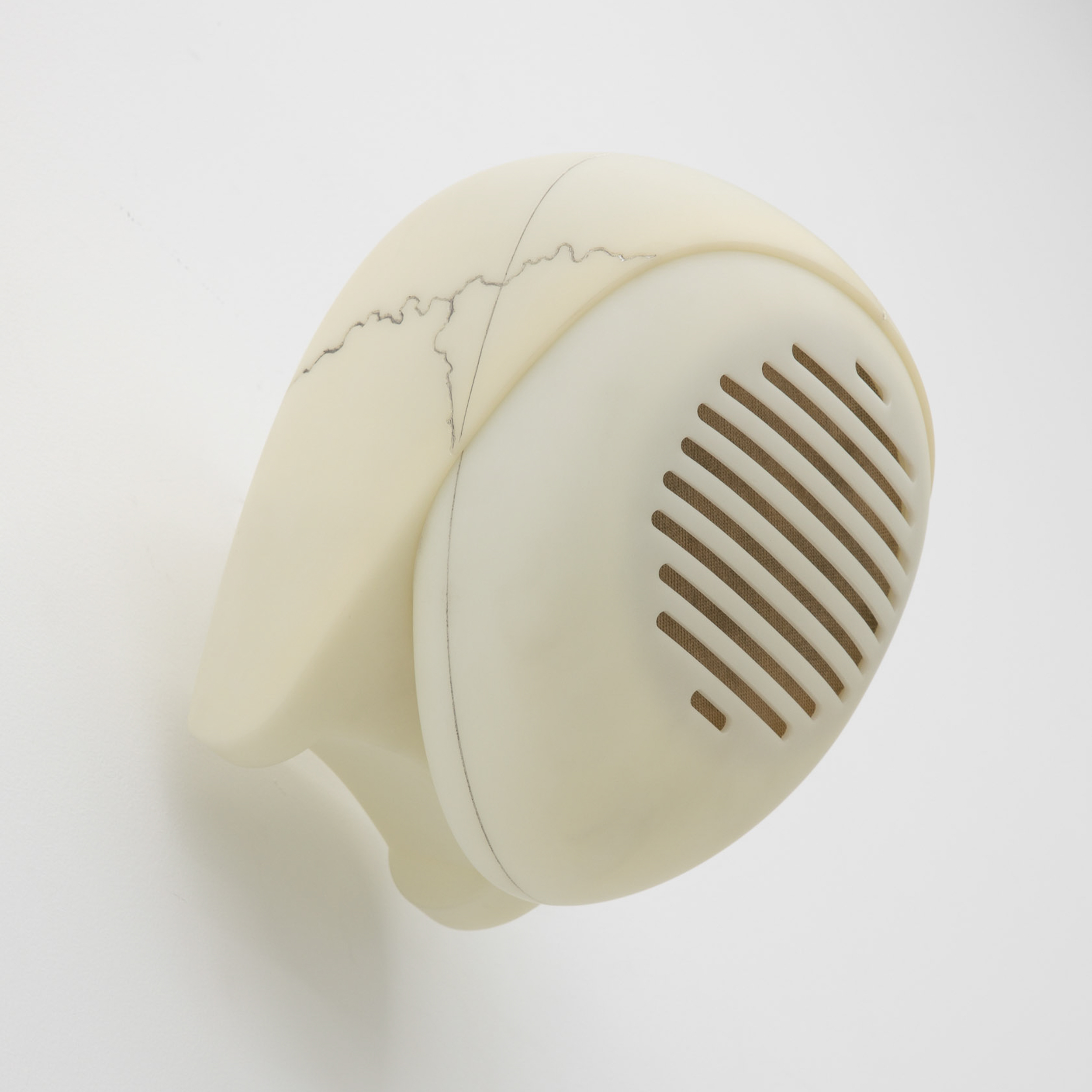
Exhibition details:
Cooper Jacoby
Susceptibles
Oct 18 – Dec 1, 2018
Gallery:
1, rue Fromentin
75009 Paris
Image:
Pacifier, 2018
SL resin, graphite, rust dyed cotton, radio receiver, speaker, battery and aluminum mount
16 x 14 x 21 cm / 6 1/4 x 5 1/2 x 8 1/4 in
The victor in such a scenario is that with the most resources remaining – not whomever started from a point of advantage, but who has managed to salvage whatever materials from the violent grind. Attrition, stemming from the Latin “atterere” translates to rub, chafe, grind, or wear, weaken and impair. Ultimately none of these attacks are penetrative, they are that which leaves the flesh raw, bloodied and most importantly, lacking of its permeable, yet protective, skin.
Akin to a game of chicken which asymptotically approaches mutually assured destruction, attritional warfare may be premeditated or not, a strategy where assailants either have a war chest of hidden reserves or a post rationalization when options run out. From a viewer’s perspective, one could mistake something that looks like chaotic annihilation to be calculated multi-dimensional chess, and thus a logical fallacy of post hoc ergo propter hoc, or “after this, therefore because of this”. It’s an easy leap to make – a correlation appearing to suggest causality.
The metaphors of anachronistic warfare can only take us so far. While the binary of assailants and assailed clearly delineated within the temporal confines of war may seem anachronistic, the confusion in causality and dispersed points of attack describe a contemporary lived experience of bodies in pain. A simple example of causal confusion: I moved into a new house beside a turbine windmill field and developed tinnitus, therefore the turbine windmills have caused my tinnitus. A next step in complexity: my feelings of fatigue, eye pain, burning sensation and rashes have suddenly appeared. Limiting my electromagnetic field exposure has reduced these symptoms. Therefore EMF radiation is the cause.
And so it goes with many symptoms of idiopathic diseases which either appear spontaneously or for which the cause is unknown. Idiopathic translates loosely from Greek to “a disease of its own kind,” autonomous in a sense from an external logic of cause and effect. The contemporary body affected by such diseases often sit casted under the shadow of doubt. Without identifiable or symptomatic linkage between cause and effect, those that endure idiopathic diseases suffer the paradox laid out by Elaine Scarry’s The Body in Pain: The Making and Unmaking of the World that to “to have great pain is to have certainty; to hear that another person has pain is to have doubt.”
The contemporary subject must protect oneself from a multitude of decentralized threats so atmospheric and varied that the vertigo produced by a deluge of compounded, threatening variables leads to another fallacy of attributing causality to a singular element rather than a composite of variables for which there is no one singular solution. In such complex systems, a finger in the dam may be all that is available in a moment when all other arms and legs are occupied. As subjects depleted through an ongoing war of attrition, we are limited to palliative rather than prophylactic measures, treating one symptom but not the many-faced cause. The presence of new attacks are rarely detected except for the canaries, the most vulnerable bodies. To all else, we may not notice a levee has breached because the cues of alarm, risk and prognosis have all been drowned out by the brutal logic of attrition. As a grindstone sharpens objects, so do our bodies grind down to flints against the ever sharpening sheath of an annihilatory infrastructure that kills slowly through deterrence, discomfort, chronic pain through repeated motion, inhalation of invisible particles, ambling with friction towards a slow death, leaving our bodies as flints hoping only to become a spark for our own self immolation.
– Dena Yago


